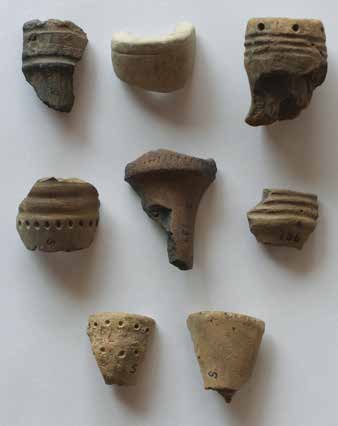The Shelby site, also known as Shelby Fort, is located in the Town of Shelby in Orleans County, New York. It dates to the early-to-middle sixteenth century and contains the remains of a Late Woodland period village and the associated double earthen ring that surrounded it. Portions of the earthring are still visible on the surface.
This site sits on a slight knoll near a small creek and overlooking a wetlands. Shelby has been known to area residents since the eighteenth century and possibly earlier, and was subject to various excavations throughout the nineteenth and twentieth centuries. Ephraim Squier first wrote about the site in 1851. The earliest known excavation of the earthwork was in the 1870s by Smithsonian anthropologist Frank Cushing, who had grown up near the site and would camp there for days at a time. Cushing referred to Shelby as “one of the most interesting ancient earthworks in the state.”
The significance of this acquisition by the Conservancy was noted by Douglas Perelli of the University of Buffalo. “This is a huge save for the archaeology of western New York and the Eastern Woodlands. Like so many Late Woodland villages sites in our region, these sites are not well documented in literature and their continued existence bodes well for our learning from them in the future. A big thanks to the Conservancy for stepping up and saving this one.” Once acquired, the Conservancy will establish the property as the Shelby Archaeological Preserve and will work to acquire additional portions of the site in the future.




